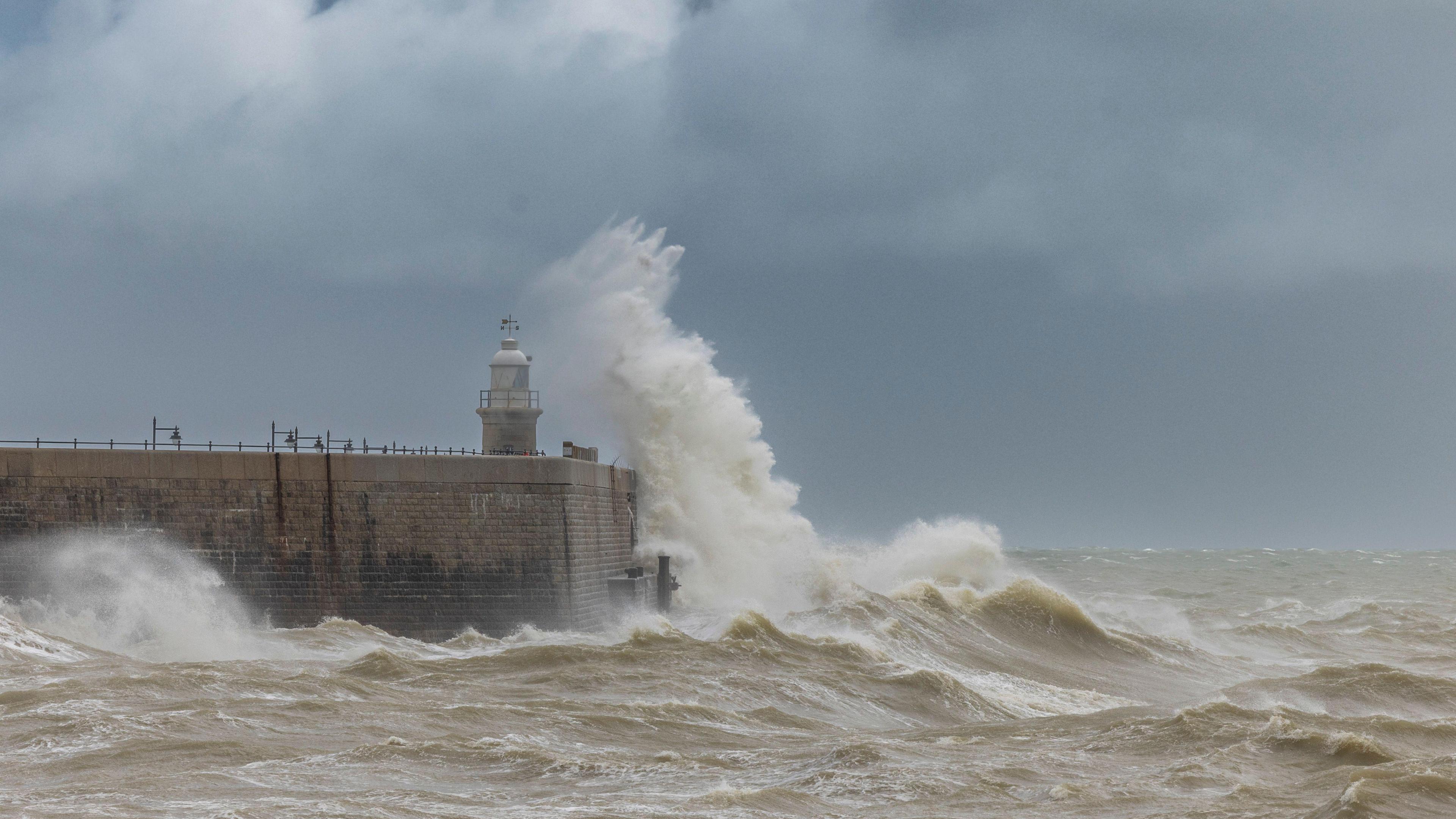Deadliest, most intense, windiest: Three of the UK's worst storms

- Published
Now we are firmly into autumn, there is an increasing chance we will see strong winds, heavy rain and some flooding over the next few months.
There may even be severe - named - storms bringing larger impacts to parts of the United Kingdom.
Last year we saw the highest number of named storms since the Met Office and its partners started to give names to storms in 2015.
Here we take a look at three of the worst storms to hit the UK.
1. Biggest loss of life
Well before the UK had a reliable severe weather warning service and even the ability to forecast accurately just 24 hours ahead was the Great North Sea flood of 1953.
Widely regarded as one of the worst peacetime disasters to hit the country, a massive storm surge from the North Sea hit the east coast.
High spring tides and northerly gales combined to bring the surge along 1,000 miles of coast, killing 307 people in Lincolnshire and East Anglia, out of a total of 2,551 fatalities in the UK, Netherlands, Belgium and out in the North Sea.
It was this event that led to the construction of the Thames Barrier to protect the City of London from future storm surges.
Storm Ciar谩n was a deep area of low pressure that brought destructive winds to southern England and the Channel Islands
2. Most intense storm
There are different ways you could classify the strength of a storm, for example the highest wind, the overall size, or how much damage there is.
Storm intensity, though, is a measure of the lowest pressure recorded - the lower the pressure, the more intense the storm is.
The most reliable current record is 953.3 millibars in Plymouth, November 2023, which was the lowest pressure recorded during Storm Ciar脿n.
While there are instances of lower recorded pressure in the 19th century, these measurements are thought to be have been taken on uncalibrated and therefore unreliable instruments.
Ciar脿n mostly affected southern England, the Channel Islands and northern France with winds comparable in severity to the Great Storm of 1987.
Jersey airport reported a wind gust of 93mph, the highest at this location since the 1987 storm when 98mph was recorded.
Some of the highest wind speeds in recent years have been from Storm Eunice in 2022 that resulted in numerous red severe weather warnings being issued
3. Strongest wind in a storm
One of the most notable storms to affect the UK in recent history was Storm Eunice in 2022 when a gust of 122mph (196km/h) was recorded at the Needles Old Battery on the Isle of Wight.
At the time, red warnings for wind were issued for parts of south-west England and south Wales and then across London and the south-east of England.
Storm Eunice brought the highest recorded wind speeds for England since the Great Storm of October 1987 when a gust of 115mph (185km/h) was recorded at Shoreham-by-Sea, West Sussex.
However, the strongest wind recorded in the UK wasn't during a storm.
In March 1986, on the summit of the Cairngorms in the Highlands of Scotland, a wind gust of 173mph (278km/h) was recorded.
While that is exceptional, you would expect mountainous areas to be windier than at sea level which is why meteorologists tend to focus on winds below 1,000ft (300m) - where most of us live.
The highest non-mountainous wind gust was set in February 1989 in Fraserburgh, Aberdeenshire, at 142mph (229km/h).
- Published1 day ago
- Published1 day ago